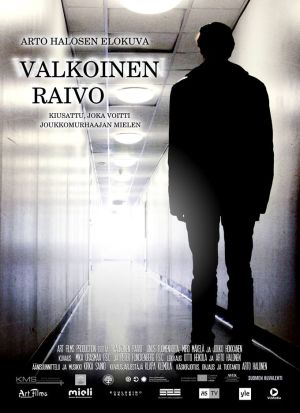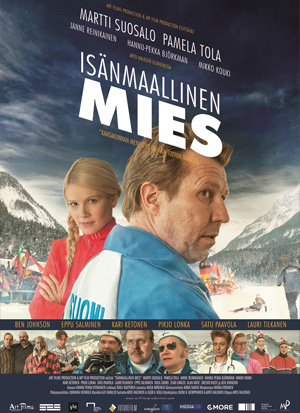September 1999. We arrive at Bishkek, the capitol of Kyrgyzstan to shoot the film The Stars’ Caravan. As a matter of fact my situation is better to begin with than what one would expect, considering we’re making a documentary, and especially in a so-called exotic place. Our Finnish crew is made up of a cinematographer, a camera assistant and a sound recorder—and in addition to these, an interpreter and a production manager. Through a local production company we get a couple of cars and drivers, a production assistant, sound assistant, local interpreter and a lighting designer. The crew is yet enlarged when we get to the fiction shoots in the film. Usually, when making films far from home, I am used to operating with a group of three or four, so I’m happy to be starting like this. But quantity doesn’t always stand for quality, and sometimes a group where not everyone knows what they’re doing can slow down rather than speed up things. Bringing together and harmonising groups from two different continents takes time, like it takes time for those who are used to a safe working environment to get used to the Asian-Russian logic and operation.
I had been in Kyrgyzstan a year ago on a preliminary research trip. While there, I explored the subject and its possibilities in the cinematic form. I also cast the lead parts and began negotiations with the local production company to organise the production. With me were our production manager and a French photographer who had had the original idea for the film. Over a month before filming our production manager flew to Kyrgyzstan with an interpreter to carry out the final negotiations with the local production company and to make sure that the subjects of our story were unchanged. Contrary to the information we were given from this trip (about the things being unchanged), I realize in Bishkek however that the story and its background have altered in remarkable ways. Shortspanned Kyrgyzstan has rearranged many important themes of our film. The existing script is in a lot of ways useless.
ENDLESS OBSERVING
The situation is not as worrying as one would think. The changes as well are interesting, and offer new perspective to our subject. A small problem is only that during the month’s shooting I have to simultaneously keep planning the film, and go through the hypotetical structure of the film in my head over and over again, to grasp the different shades of what’s happened and happening. Observation also needs to become more intense; one must pick up everything that relates to the new way of thinking and is interesting. This is actually a good thing because structuring a documentary is based on good observation, which is crystallised to take the wanted form. If one has planned one’s work too precisely beforehand, the ability to observe and utilise one’s observations is easily numbed. This is what I often criticise myself for. I have a habit of planning the documentary stories quite far beforehand, which again has to do with my method of working. Anyhow, I believe that landing in a new situation amidst changed circumstances was in this case beneficial and we ended up working with a world that was more interesting than the pre-planned one. Restructuring the film in my mind gave a new kick to the project and took us all the way to the end of filming. Because of the international funding, there was a very precise draft of the script for funding decision, which is sort of mad when it comes to documentaries. After the filming, I drafted a new script from what we had shot for the sponsors’ inspection, and to my relief they approved of it despite the new form of the film.
With my other example film; Karmapa – Two Ways of Divinity the original idea held a lot better although the production process took years. But new, changing situations did shape and tint the structure and narrative of this film as well.
EMOTIONAL PROGRESSION
The starting points for The Stars’ Caravan and Karmapa were slightly different. Karmapa was my own idea, which I developed, wrote and worked on from the beginning to the end myself. The Stars’ Caravan was ordered from me through Millennium Film’s Kristiina Pervilä as a so-called international cooperation project. I was however allowed to make my own story out of it, to write and work on as I wished – supported by the sponsors. In this way, what was particularly important to me - that I was able to bring forth my own soul in the film- happened in both cases.
When the idea for a film begins to take shape in my head, I also go through the idea emotionally. I try to observe what kind of emotions the idea awakes in me, and what kind of visual images my mind produces from these emotions. I try to retain this “emotional observation” throughout the preparation and filming stages, and construct scenes that deepen and tighten the structure of the film from the most powerful and suitable sequences. With Karmapa the mere idea brought up some images, which were carried along to the final outcome. Some ideas were born during the trip. For instance, I felt right in the beginning that it was important to show the taking over of Tibet by China as a fiction scene, through the Dalai Lama’s eyes. I also visualised an idea about contrary elements where the violence of the Chinese against the Tibetan monks is interspersed with the monks’ ceremonies in various convents. Composed music would operate together and in turns with the music of the ceremonies to make a symphonic whole. I felt the particular importance of these sequences to be their emotional impact rather than their weight in terms of narrative or information. They crystallise the filmmaker’s view on the subject and are glazed with a strong emotional charge.
Often the emotional sequences will not materialise like I want them to. … They are challenging precisely because of their realisation - how to ”process an emotion or vision that is clear in the mind to the film, and make the viewer live through this sequence in the desired way”? These sequences are in any case important building blocks to me right from the beginning of a project when I’m thinking up ideas. Often before a shoot I ponder and compare the alternatives for the film’s structure in my mind, focusing on the emotional level – what do I (and hopefully, the viewer, too) feel at any particular moment in the film? According to my feelings, I then bring together logical parts of the whole; we film them, and later see how they work at the editing table. I don’t know how necessary or useful all this is…but for some reason I’m used to doing this mental exercise with different possibilities.
PLANNING THE STRUCTURE
Despite my plunges at these mental exercises, from very early on I think about the structure of the film using traditional methods as well. This mixture of methods might result from my background as a fiction director, and my reluctance of a kind, to realise documentaries using only traditional methods. The traditional way of thinking about the structure and the aforementioned intuitive emotional structuring come together, and are in the end hard to differentiate. When I thought of the right way to approach the structure of Karmapa, I came across Eastern numerology and the Buddhist culture. I was flustered, attracted and surprised by the chaotic progression of the Buddhist ceremonies; at times aggressive roaring and accelerating changes of tempo ending up in peaceful harmony. I found a lot in this, which related to the contradictory existence of man and the whole world, and also the sad but somehow fatalistic fate of Tibet. The subject of our film, as well, was like a Buddhist ceremony: “A violent and destructive political-religious fight, in the midst of which beats a harmonious and spiritual heart, meaning two great spiritual leaders as the teachers of a philosophical religion. But as each other’s competitors as well.”
So I ended up with a structure consisting of five episodes. Each episode began peacefully, accelerated and rended in parts... to calm down again at the end. I fit the information and the development of the drama inside the episodes. Each episode was meant to bring a new element to the story. I thought of the episodes like “five Buddhist exercises” or “five inhalation/exhalations”, which leave something with the viewer each time, on a deeper level. I adjusted the editing and the sound of the film to this way of seeing the structure, which I thought also gave clarity for controlling the technically complex material. The accelerating and at times attacking editing style of the film has aroused various reactions ...some appraise it; some find it all too restless.
In The Stars’ Caravan, the mythical Manas figure, who is important to the Kyrghyz people, plays a notable part in the story. We realised the fiction film about him that is inside the documentary ourselves. The fiction is divided into four parts, and in this way, automatically shapes the structure and narrative of the actual documentary. I planned the fiction sequences long before the filming, as well as the passages and how they fit into the documentary story. The fiction about Manas gives a possibility for comparison between today’s Kyrghyzstan with its conflicts, our lead characters in the documentary, and the old epic story. Because the Kyrghyz view the present through Manas, building dreams upon him, I found it intriguing that the structure of the film should also be shaped and completed through him. I also felt that (in the film) Manas was regarding the uncertain steps of his culture from some elevated plane of existence. The eagle in the film, with his piercing eyes, symbolizes to me the presence of Manas in this time as well.
THE POSSIBILITIES OF DOCUMENTARY
Factors motivating my personal documentary expression have been film-likeness, mixing fact and fiction, as well as linking and developing multi-layered narrative. I also find a good contact with the audience essential, which means thinking about the film through the viewers’ eyes, trying to find those ways in which the film could be all the more entertaining but yet more profound as well. I might not have progressed further than the very beginning with these goals and dreams of mine, but they are the factors motivating my work all the same.
Somehow I would like to take this same way of thinking to my forthcoming fiction films as well, but I know it will be difficult. A creative and experimental approach to narrative is a lot harder to accomplish in fiction films. Big budgets bring more decision-makers with them, which means that new ideas often end up producing old solutions. But one may and should try everything if one has inner motivation. Film will not die as an art form, thanks to so many talents, although the attempts to homogenise it seem at times harsh. When I think about the landscapes and the worlds of Kyrghyzstan and Tibet, I realize how my film could have been done in innumerable different ways, more influential and better ways as well. But that’s good. It speaks about the richness of our media and our possibilities.
Arto Halonen
Ajankohtaista
-
- Informaatio
- 23.04.2025
Jälkeemme vedenpaisumus keräsi kriitikoiden kehut Brysselissä
-
- Informaatio
- 20.03.2025
Jälkeemme vedenpaisumus merkittävään kilpasarjaan Brysselissä
-
- Informaatio
- 22.01.2025
Antero Varovainen ja Onnenkivi palkittiin Itävallassa
-
- Informaatio
- 08.01.2025
Jälkeemme Vedenpaisumus ehdolla vuoden 2024 parhaaksi käsikirjoitukseksi
-
- Informaatio
- 30.12.2024
Jälkeemme Vedenpaisumus kerännyt positiivista huomiota Suomessa ja ulkomailla




